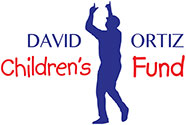Get Informed
Nearly 2,000 babies are born with congenital heart defects in the Dominican Republic each year. And about the same number are born with congenital heart defects each year in New England. It’s a striking similarity that speaks to two places David Ortiz loves very much.
Defined by malformations of heart structure existing at birth, congenital heart defects occur worldwide in almost 1% of newborn babies. It is one of the most common types of birth defects, and is a major cause of infant death.
According to the CDC, about 25% of babies with a congenital heart defect have a critical form that requires surgery or other procedures in their first year of life to survive. Many of the others will develop health problems such as irregular heartbeats, increased risk of infection in the heart muscle, and weakness in the heart, which if left untreated make it a struggle to lead a normal life.
In the Dominican Republic, the need for better and more accessible children’s health care is significantly greater than most neighboring developing countries. According to the World Health Organization, congenital health anomalies in the country are twice the average rate of the region, and they are the second most common cause of death behind premature births for those under five years old. Despite recent improvements, the Dominican Republic still has one of the highest infant mortality rates in the region, according to the CIA. Against this challenging backdrop, our program represents a critical source of care and a model for increasing health care access for the country’s most vulnerable population.
Help spot the signs of congenital heart disease and get any child with these symptoms to a doctor right away
• A bluish tint to the lips, skin and fingernails
• Fast breathing and poor feeding
• Poor weight gain
• Tiring quickly after exertion or inability to exercise
• Lung infections
